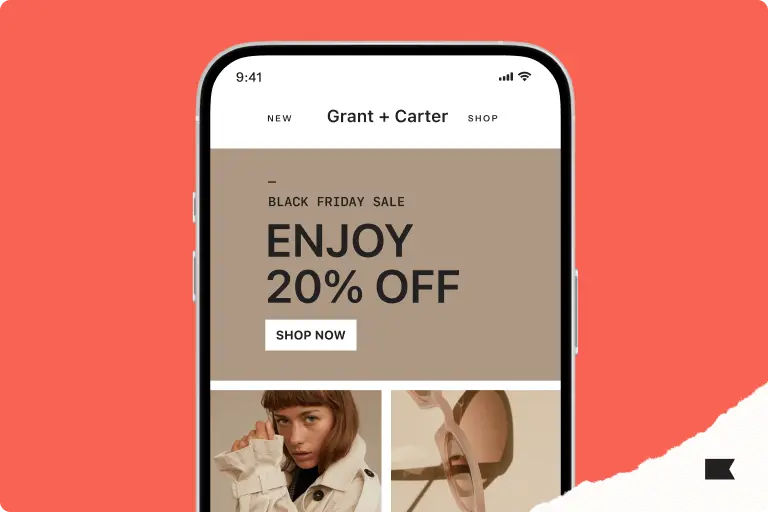6 tips for navigating deliverability in the era of tighter email sender requirements
The standard for reaching the email inbox is higher than ever.
Brands have to adapt.
As we enter a new, privacy-first era, many brands are noticing drops in email deliverability, bounced messages, and more unsubscribes.
Sound familiar? You’re not alone.
Between Yahoo and Gmail deliverability changes and increasingly stringent sending requirements, it’s harder than ever to deliver emails. The only way around this is to embrace these changes and adapt—fast.
Since its release in 2012, a domain-based message authentication, reporting, and conformance (DMARC) policy has been considered best practice for ecommerce businesses—but not a necessity.
Not anymore. Yahoo and Gmail now require all bulk senders to have a DMARC policy in place on their domain (remember the whole “p=none” thing?). Setting your DMARC policy to “none”is just the first step.
The truth is that managing your email deliverability is not an item on a checklist or a one-time task. Eventually, these inbox providers will require you to move your policy to a stricter standard of “quarantine”or “reject.”
If you don’t take the time to understand the role you play in managing your brand’s deliverability, that could land you on a block list and prevent you from ever reaching the inbox. Instead of waiting for that to happen, it’s time to be proactive.
Tighter send requirements might seem worrying—but let’s reframe them as the perfect opportunity to evaluate your current sending strategy.
1. Audit your current email marketing strategy
Regular audits of your current email strategy can help you highlight any potential issues.
During your audit, focus on these areas:
How do your key metrics stack up with your industry’s average? Track click rates, bounce rates, spam complaints, inbox placement, and open rates to understand your current email landscape.
What percentage of your subscriber list is actually engaged with your messages? Is it time to clean your list and say goodbye to unengaged subscribers? If you don’t already have an automated sunset flow tagging unengaged subscribers for suppression, you’ll want to set that up.
Do your subject lines and copy follow best practices? Prioritise making your email design clear, relevant, and eye-catching. All images should contain alt texts and emails should be mobile-friendly.
Review spam complaints and sender reputation. Re-confirm you’re compliant with relevant email marketing laws and regulations including GDPR, CAN-SPAM, and state-level policies.
2. Segment your audience
One of the most effective ways to improve email deliverability is to focus on segmentation. By segmenting your email list, it’s easier to create hyper-relevant, ultra-targeted content, which subscribers are more likely to interact with.
Split your email list into groups with similar characteristics, and then create content designed to appeal to each segment. Aim for at least 8 or more unique segments and send highly targeted campaigns to these smaller segments, at least once a week. Examples of possible segments include new subscribers, customer lifetime value, past purchase history, and location.
We recommend using a tiered engagement segmentation strategy, which might look like this for small businesses:
- Send 70% of campaigns to engaged profiles: general promotions and snackable content
- Send 20% of campaigns to a broad audience: highly relevant, unique content, promotions, and traffic-driving events
- Send 10% of campaigns to your whole list: large promotions and traffic-driving events
In addition to these segments, create another for subscribers whose emails have soft-bounced within the last 30 days. A soft bounce means an email has been returned for a temporary reason, like a full inbox or because an email server is down. To lower bounce rates, exclude this segment from all campaigns moving forward.
3. Keep an eye on spam complaints
Spam complaints can result in your emails being blocked, or sent straight to people’s spam folders. The threshold for this is very low—Google recommends keeping spam rates below 0.10% and has a threshold of 0.30%. Use Google’s Postmaster Tool to monitor your spam complaint rates, and take action to reduce them.
Key strategies to reduce spam complaints include:
- Enabling double opt-in
- Enabling global unsubscribes
- Making unsubscribe links easily accessible
- Suppressing any profiles that have never engaged
4. Use dedicated click tracking
Instead of using default encoding for click tracking links, switch to dedicated click tracking to display your own domain on these links.
Showing readers an instantly recognisable link containing your brand’s name can help build trust and increase the chances of them clicking on that link, helping boost engagement.
Some email providers also consider the reputation of domains used within emails, so using the same root domain can help create alignment.
5. Use the clipping warning tool
If your emails are too long, Gmail clips them and instead displays this message.
Even if readers click the link to read the entire message, style tags are removed, which means formatting won’t display as you intended. Image size doesn’t affect clipping, but email size does. The size limits for different devices are:
- Desktop: 102 KB
- Mobile: 20–70 KB
To avoid clipping, keep your emails under 85 KB, and use Klaviyo’s built-in clipping warning tool to make sure your emails aren’t getting clipped.
6. Add alt text to all images
Including alt text for any images within your emails is important for two main reasons: accessibility and deliverability.
Alt text makes your images accessible to everyone, including people with visual impairments. It also helps improve deliverability because many spam filters pick up on emails that contain images but no alt text.
Some email clients also block images by default. If your image doesn’t contain alt text, readers will simply see a blank box.
When writing alt text for images, keep things clear. Follow web content accessibility guidelines and tailor your alt text to the purpose of the image. Aim to include keywords that describe what the image is showing, plus include any text that’s displayed within the image.
Start using Klaviyo deliverability tools today
Email is an incredibly powerful marketing channel, so it’s crucial to adapt to these tighter send requirements.
Klaviyo deliverability tools include a range of features like click tracking, segmentation, and key performance metrics that help maximise the chances of your emails getting seen.
Related content

Migrating to Klaviyo? Get expert insights on timing, tools, and tips to maximize your impact before Black Friday & Cyber Monday.

Explore Black Friday Cyber Monday email examples from top brands like Beyond Yoga and Twinings. Learn what worked, get expert tips, and see their successful results.

Learn more about the best time to send marketing emails. Pinpoint the optimal time to capture user attention to boost engagement and ROI.